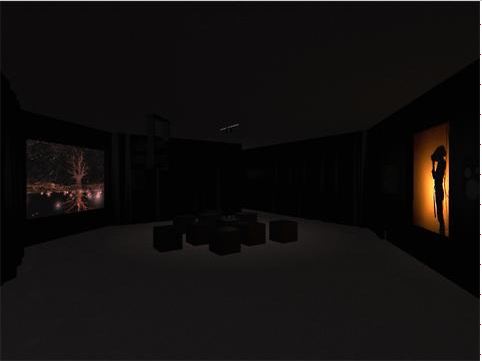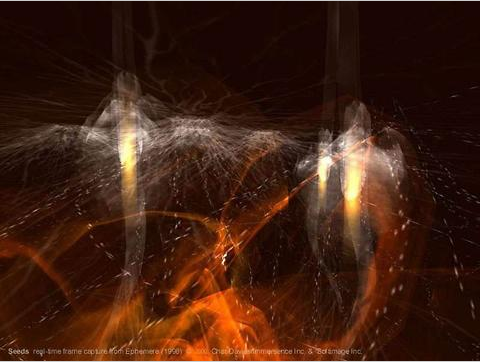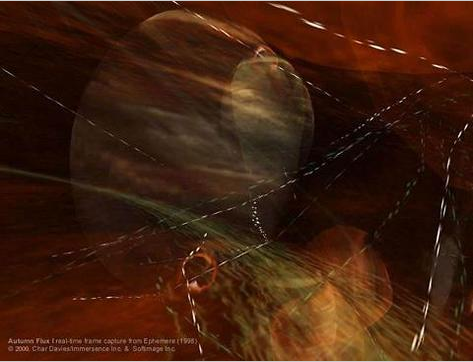Charlotte Davis


Still Images from “Osmose” (1995)
Quote about “Osmose”
“If in virtual environments during the first years of Virtual Art one often witnessed the use of gateways that caused abrupt crossovers, what one experiences in the image spaces of «Osmose» are osmotic crossovers from one sphere of images to the next, always aware of how an old sphere deteriorates and then amalgamates with a newer one. This, of course, entails calculating both image spaces at exactly the same time. [...] Two worlds of text parenthetically accompany this simulacrum of nature: on the one side, the 20,000 lines of the programming code that produces the work, which in the artificial world arranges itself to an enormous column awaiting inspection. On the other side, there is a room filled with fragments of texts, focussed on expressions that appear in the study of nature, technology and the body. The huge programming code fails to substantially lessen the overwhelming impression. But, at times, the binary fundament of the image space is exposed, and one consciously perceives the roots of the illusion in this way.”


Still Images from “Ephemere” (1998)
About “Ephemere”
Ephémère is an interactive fully-immersive visual/aural virtual artwork which furthers the work begun in «Osmose» (1995). The work is iconography evolved through Davies’ long-standing practice as a painter, and, as in «Osmose,» is grounded in ‹nature› as metaphor: archetypal elements of root, rock, and stream etc. recur throughout. In «Ephémère» however, this iconographic repertoire is extended to include body organs, blood vessels and bones, suggesting a symbolic correspondence between the chthonic presences of the interior body and the subterranean earth.
Ephémère is structured vertically into three levels: landscape, earth, and interior body. (…) During public installations of «Ephémère,» immersion takes place in a private chamber facing a large darkened space where museum visitors can witness the immersive performances as they take place in real time: aurally, as sound is generated by the participant’s behaviour within the work; and visually, as imagery generated from the immersant’s point-of-view is projected in real-time onto a large-scale video screen. The shadow-silhouette of the immersant is projected live onto another screen, emphasizing the relationship between bodily presence and the immersive experience.
Virtual Reality is used to transport into other natural environments. To avoid any representational realism. To radically challenge traditional notions of embodiment and the bodies connection with its physical environment by immersing viewers in a virtual world driven by their own body and breathing.